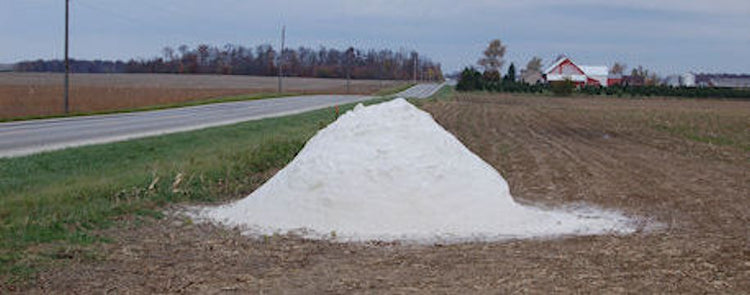Why is pH so important in your food plot?
Food Plot 101 By Jeremy Flinn, Professional Deer Biologist
Every year I hear deer hunters talking about food plots and pH. Often it is tied into the need to lime a food plot. Funny thing is, even though it is food plot 101, most never take a soil test. So they really don’t know the pH value; but more than that, they act surprised when I tell them lime itself doesn’t change pH. It’s the calcium in the lime that neutralizes soil acidity. But even with all that aside, 8 out of 10 people planting food plots have NO idea what the pH does or does not do to a food plot!
First of all, pH is the acidity (in most cases) or alkalinity of the soil. In most regions of the whitetail range, pH is likely to be acidic or less than 7.0. In some areas of the Great Plains, soils may actually be alkaline or above 7.0. You are probably thinking what does that have to do with the food plot you plant?
Acidic soils basically place “handcuffs” on a plant, preventing quality root development and a decrease in the overall health of the soil. More importantly, if you decide to fertilize your food plot, you end up wasting most of it!
How so? Well as the acidity of the soil becomes stronger, the plant loses its ability to absorb the nutrients, particularly Nitrogen, Phosphorus, and Potassium. For example, if your soil pH is around 5.5, then you are wasting 1/3 of the N-P-K fertilizer you are using! And we all know that fertilizer isn’t cheap. No, it doesn’t evaporate, it gets “bound” up in the soil. Basically, although it is sitting there, it is unavailable for plants to use.
So how does lime or more specifically calcium “fix” the problem? Like I said earlier, Calcium (Ca) is what actually helps neutralize the soil. The calcium bumps off hydrogen that is bound to the soil, replacing them. The now floating hydrogen is formed into carbon dioxide and water. The calcium left behind not only has neutralized the soil but made more calcium available to the plants which is actually the most required essential nutrient in the soil, even more than Nitrogen, Phosphorus, and Potassium!
Now the problem with lime is that it typically takes a long time for this process to occur, especially for traditional Ag Lime to break down. In fact, it can take over 2 years in some cases to fully break down into useable calcium. Pelletized and Liquid lime work faster but are both expensive and may not last as long term. Liquid calcium, like DeerGro’s PlotStart, can work fast and last multiple growing seasons, often making it the viable option. Plus instead of applying in thousands of pounds, you only have to handle a few gallons per acre.
So the next time you decide to discuss pH, you will have a little bigger “knowledge bomb” on all your hunting buddies, and maybe even help them grow a better food plot in the long run.


